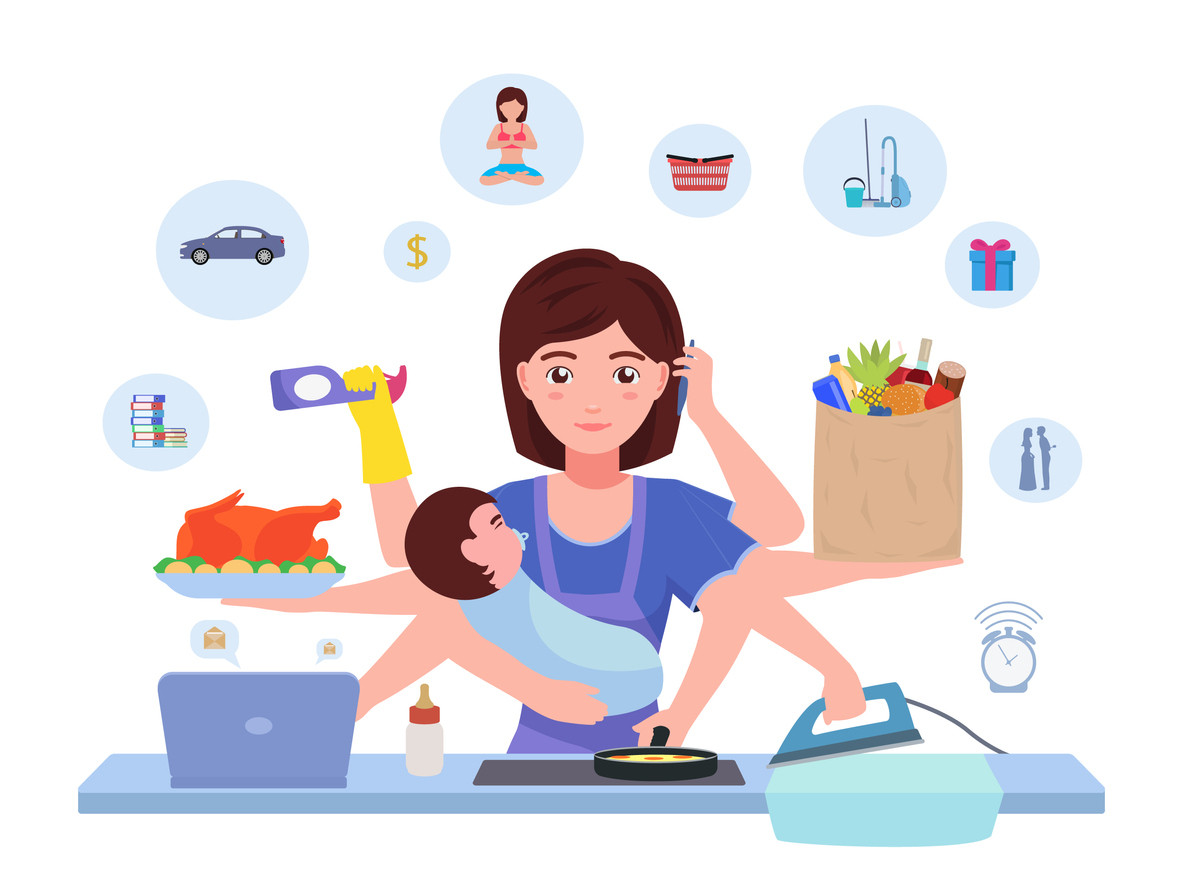Time to spend with the family, time for yourself, time to work, time for household chores – it can be very challenging finding time for everything that needs to be done and everything you would like to do. Especially parents will always point their biggest complaint towards time issues. A day simply doesn’t have enough time for everything. This feeling of constantly having too many things to do and not enough time to do them is called time poverty. Many people persistently feel time poor, and this can have severe and wide-reaching impacts, including lower wellbeing, physical health, and productivity.
Human beings have always faced the problem of limited resources. These constraints were driven by crises such as plagues, famine, and drought. In order to get enough tangible assets to survive, policy decisions have primarily focused on increasing material prosperity. This focus has been driven by the belief that material wealth results in greater welfare. The gross domestic product has been used as the primary tool for measuring country-level welfare since the beginning of the last century.
This focus on material resources has been challenged in the 1970s by the economist Richard Easterlin, who discovered that while economic growth in the US had steadily increased over the previous decades, people’s happiness levels remained the same. It is now recognized that other factors such as societal trust and optimism are also critical in shaping the well-being. Even though the monetary wealth has risen all over the world, this has not translated into an abundance of time. On the contrary, rising wealth often increased the feelings of time poverty.
This problem is especially persistent among parents. Official UK statistics from 2018 translate being a parent of children younger than 15 with 14 hours less free time per week. Primary caregivers, especially those without access to support structures, are particularly prone to time pressure. The chronically time poor often find themselves trapped in a cycle of social and economic poverty. The pandemic has also magnified many of the time poverty problems.
Productivity is extremely important in our culture. Work often reaches into our personal time and parenting feels more intense. Having advanced technology to offer us contact to friends and work at all times can lead to more pressure to be always on. Children have more structured activities compared to the past, so for parents it is no longer simply opening the door and letting a child out to play. These shifts in the society have changed the way that we perceive time.
While some demographics have enjoyed the benefits of more efficient ways of working over the last few decades, others have suffered due to an increase in time spent on unpaid work and cognitive labor. Most often those burdens are shouldered by women. It isn’t necessarily time poverty that is increasing, but time inequality.
Time poverty overwhelmingly affects caregivers, but it also disproportionately affects the poor. Families that cannot pay or do not have access to caretakers for children, childcare and various appointments can claim an inordinate amount of time. Caregiving tasks are almost always done by women, even if they live with a partner.
For mothers, lack of time is a serious problem. Every day, all over the world, women perform countless hours of work without pay. Women in developed nations spend an average of 2 times and in developing nations 3.4 times as many hours per day on unpaid work than men. This includes cooking, cleaning, caring for children and the elderly.
Even as female participation in the paid workforce grows, women across widely diverse economies continue to provide the majority of unpaid care work. When all types of work (paid and unpaid) are considered, women work longer days than men on average.
In some cases, these inequalities are due to gender expectations about what work women should do. In others, the inequalities are more subtle. For many women, extra time is consumed by the so-called “hidden load” – the emotional and cognitive labor women shoulder when planning meals or organizing playdates. This hidden load remains unrepresented in economic measures or productivity and growth. This time poverty resulted by the hidden load of housework often drives women and particularly mothers out of the workforce and funnels them into lower paid jobs.
Cognitive time poverty can also show up in high income households, as someone still has to coordinate all the household help. In Switzerland care centers for children are not supported by the government which means for many families that one parent has to stay home with the kids or childcare has to be organized within the family. Frustrations stemming from time poverty are represented by the Great Resignation at the moment. In the year 2020 2.4 million women and 1.8 million men left the labor force – meaning they are neither working nor actively looking for work. These numbers represent drops of 3.1% and 2.1% respectively, and rank among the largest 12-month declines in labor force participation since the post-World War II era.
Time poverty can lead to poor sleep, burnout and depression. But feeling overwhelmed by domestic responsibilities can cause women to delay seeking medical care. Time poverty also promotes unhealthy eating habits and decreased exercise. It also creates barriers for people to explore interests outside of obligatory responsibilities like work or family care. When people live with time poverty, they miss out on leisure activities that would help them support quality of life.
But not only downtime and time for new interests is what the time poor are mission out on. It is also opportunities to improve life circumstances. Students who are also parents are less likely than their childless peers to complete their education. People with children under the age of 13 spend significantly less time on education, with experts specifically pointing to time poverty as the primary cause.
The time poor also struggle to carve out the hours needed to seek better employment, and often don’t have the mental space to make good financial decisions. The resulting economic poverty creates even greater time poverty. This puts the time poor in a vicious cycle. The low income makes them time poor, but their lack of time also stops them from improving their economic circumstances. It leads to lower productivity, and eventually lower chances for advancement.
The pandemic has increased the existing issues. The average working day increased by 48 minutes in the early phases of lockdowns, and the proportion of unpaid work done by women multiplied since many working mothers had to juggle jobs with homeschooling. Stress and depression rocketed among parents and the labor market participation dropped. The pandemic removed many support systems previously available for parents and in some cases added additional responsibilities, such as grocery shopping for an elderly neighbor. These additional responsibilities fell primarily on women. AS a result, mothers were twice as likely as fathers to lose their employment to accommodate for a lack of childcare, and many had to decrease their hours of work.
Expectations for productivity and performance are constantly increasing and so are the expectations on engagement and responsibility as a parent. We praise those who “do it all”, the “super mums”. They are presented as a goal to strive for. This normalizes a lack of support from the government, employers and communities, putting the responsibility back on mothers.
In order to reduce the time poverty gap, a real change from governments and employers is needed to support mothers and primary caregivers. Employers have to create an environment where employees can take care of their needs without fear of losing their jobs. The government needs to create policies that support parents: guaranteed paid parental leave and affordable childcare support.

